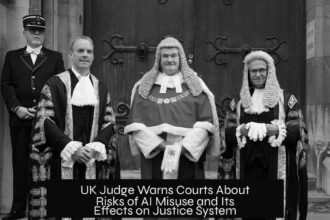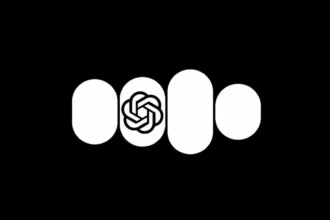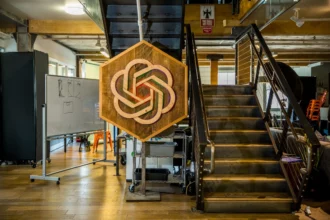Table of Contents
ToggleAI Analysis of Ancient Handwriting Provides New Age Estimates for Dead Sea Scrolls
An AI program named Enoch studies handwriting styles on ancient manuscripts, revealing that many Dead Sea Scrolls may be older than previously thought. This approach offers a new method to date undated manuscripts more objectively and accurately, refining our understanding of ancient history.
Traditional Dating Methods vs. AI Analysis
Historically, researchers dated manuscripts using radiocarbon testing and by examining handwriting style evolution. Some texts include explicit dates, but many do not. Scholars compare handwriting features to place manuscripts within a rough timeline. Enoch automates and enhances this by applying machine learning to handwriting patterns.
Development of Enoch: Training the AI
The research team combined radiocarbon dating data with detailed handwriting images to train Enoch. By pairing the known manuscript ages with corresponding handwriting styles, the AI learns how writing evolved across centuries. This enables it to predict the approximate age of manuscripts solely based on handwriting characteristics.
Accuracy and Expert Validation
Experts tested Enoch’s estimates on 135 Dead Sea Scrolls. Results showed that roughly 79% of Enoch’s age predictions were realistic. The remaining 21% were deemed too young, too old, or inconclusive. This level of accuracy reflects the AI’s strong potential as a dating tool, though it requires ongoing refinement and human oversight.
Key Results and Historical Insights
Enoch’s dating often suggests older ages for many scrolls than traditional handwriting analysis had indicated. Combined with radiocarbon data, these findings revise timelines for the creation of some documents. The AI reveals nuances in manuscript timelines that reshape the understanding of the scrolls’ origins and historical context.
Significance and Collaboration
Enoch represents a breakthrough tool for ancient manuscript studies. It acts like a “time machine,” providing fresh insight into the hands that authored biblical texts. This success stems from a multidisciplinary team, including historians, computer scientists, and radiocarbon dating specialists, highlighting the power of collaborative research.
Key Takeaways
- AI program Enoch analyzes handwriting to date Dead Sea Scrolls more accurately.
- It combines radiocarbon dating and machine learning to learn handwriting evolution.
- Experts validate about 79% of Enoch’s age predictions as realistic.
- Findings suggest many scrolls are older than previously thought.
- Multidisciplinary teamwork enables breakthroughs in ancient manuscript analysis.
AI Analysis of Ancient Handwriting Provides New Age Estimates for Dead Sea Scrolls
How old are the Dead Sea Scrolls really? Thanks to AI-powered handwriting analysis, new research suggests they might be older than we thought. This breakthrough comes from an innovative program named Enoch, designed to decode the handwriting styles of ancient manuscripts and offer fresh, data-supported age estimates.
Dating relics like the Dead Sea Scrolls is no small feat. Traditionally, experts rely on radiocarbon dating or compare handwriting to manuscripts with known dates. However, these approaches come with limitations, especially when the manuscripts lack clear dates. Enter AI, a game-changer in manuscript research.
Here’s the scoop: Enoch is an AI program developed by analyzing a large dataset of ancient Middle Eastern manuscripts. Researchers paired rigorous radiocarbon dating results with detailed handwriting styles, creating a machine learning model that “learns” how handwriting evolved over centuries. With this training, Enoch can analyze undated scripts and estimate their creation period. It’s a bit like handwriting detective work—but turbocharged with tech.
Testing Enoch’s accuracy involved a direct showdown with human experts. Handwriting professionals graded its age estimates across 135 Dead Sea Scroll fragments. Results showed that Enoch hit the mark with about 79% of its estimates, calling them “realistic.” The remaining 21%? Either a miss or too uncertain. Not perfect but impressive for a machine diving into scripts thousands of years old.
What makes this development exciting? For one, its findings suggest parts of the Dead Sea Scrolls could date back even earlier than previously assumed by traditional methods. This isn’t just about bragging rights—rewriting the scrolls’ timeline impacts our understanding of biblical history and the cultural context of the era.
“With the Enoch tool, we have opened a new door into the ancient world, like a time machine, that allows us to study the hands that wrote the Bible,” the research team expresses. It’s not just AI flexing muscles; it’s science crossing disciplinary lines, bringing historians, linguists, archaeologists, and computer scientists together in a team effort unlike anything before.
Imagine this: Enoch doesn’t just give old texts new dates—it sets a new standard for manuscript studies worldwide. Future projects with undated collections could finally get solid time stamps without destroying precious samples for radiocarbon dating. A win for preservation and scholarship!
So, what does this mean for history lovers and scholars alike? First, it changes the timeline we have trusted for decades. It invites us to rethink the cultural and religious developments at the time the scrolls were penned. Second, it shows the power of combining ancient texts with modern technology, opening broader possibilities for archaeology and historical research.
Now, you might wonder: how does Enoch actually recognize handwriting differences over centuries? The key lies in subtle stylistic shifts—letter shapes, stroke thickness, spacing patterns—that evolve much like spoken language. By learning these changes from dated manuscripts, Enoch maps out a chronology of handwriting “fashion.” When the AI analyzes an unknown sample, it matches it against this chronological map, estimating the manuscript’s date range.
This precision has practical benefits, too. Scholars can prioritize which scrolls need more in-depth study or radiocarbon testing. Museums and libraries gain a non-invasive dating method to catalog their collections. And, as more manuscripts enter digital archives, Enoch-style AI can continually refine its accuracy by learning from new data.
Does this mean traditional methods are outdated? Not at all. Radiocarbon dating and expert paleography remain crucial. But Enoch fills a critical gap where those methods hit limits or conflicts. It’s collaboration, not competition, in action.
Let’s face it, AI isn’t just about robots or self-driving cars; it can resurrect the voices of ancient scribes too. Who knew machine learning could become a historian’s best friend? Just remember, next time you hear “the Dead Sea Scrolls,” those dusty old texts might be even older, thanks to AI’s detective work in handwriting analysis.
And the story is far from over. Researchers plan to apply Enoch to other ancient manuscripts worldwide, pushing the boundaries of historical knowledge. The time machine is switched on—and the past is ready to talk.
What is the AI program Enoch designed to do?
Enoch analyzes handwriting styles in ancient manuscripts to estimate their age. It uses machine learning trained on radiocarbon-dated samples. This approach helps date undated texts like the Dead Sea Scrolls.
How does AI handwriting analysis compare to traditional dating methods?
Traditional methods include radiocarbon dating and expert handwriting comparison. AI evaluates handwriting patterns objectively across many samples. It can offer new age estimates that sometimes differ from older methods.
How accurate are Enoch’s age estimates for the Dead Sea Scrolls?
Experts reviewed Enoch’s results for 135 scrolls. About 79% of the AI’s age estimates matched expert expectations. The rest were either off or inconclusive.
What new insights has AI analysis revealed about the Dead Sea Scrolls?
Enoch suggested some scrolls might be older than previously thought. Combining AI with radiocarbon dating brought a fresh timeline to these texts. This challenges earlier assumptions about their origins.
Why is the development of Enoch considered significant?
It offers a new scientific tool to study ancient handwriting. The project merged expertise from multiple fields. This collaboration expanded our ability to explore historical documents.





